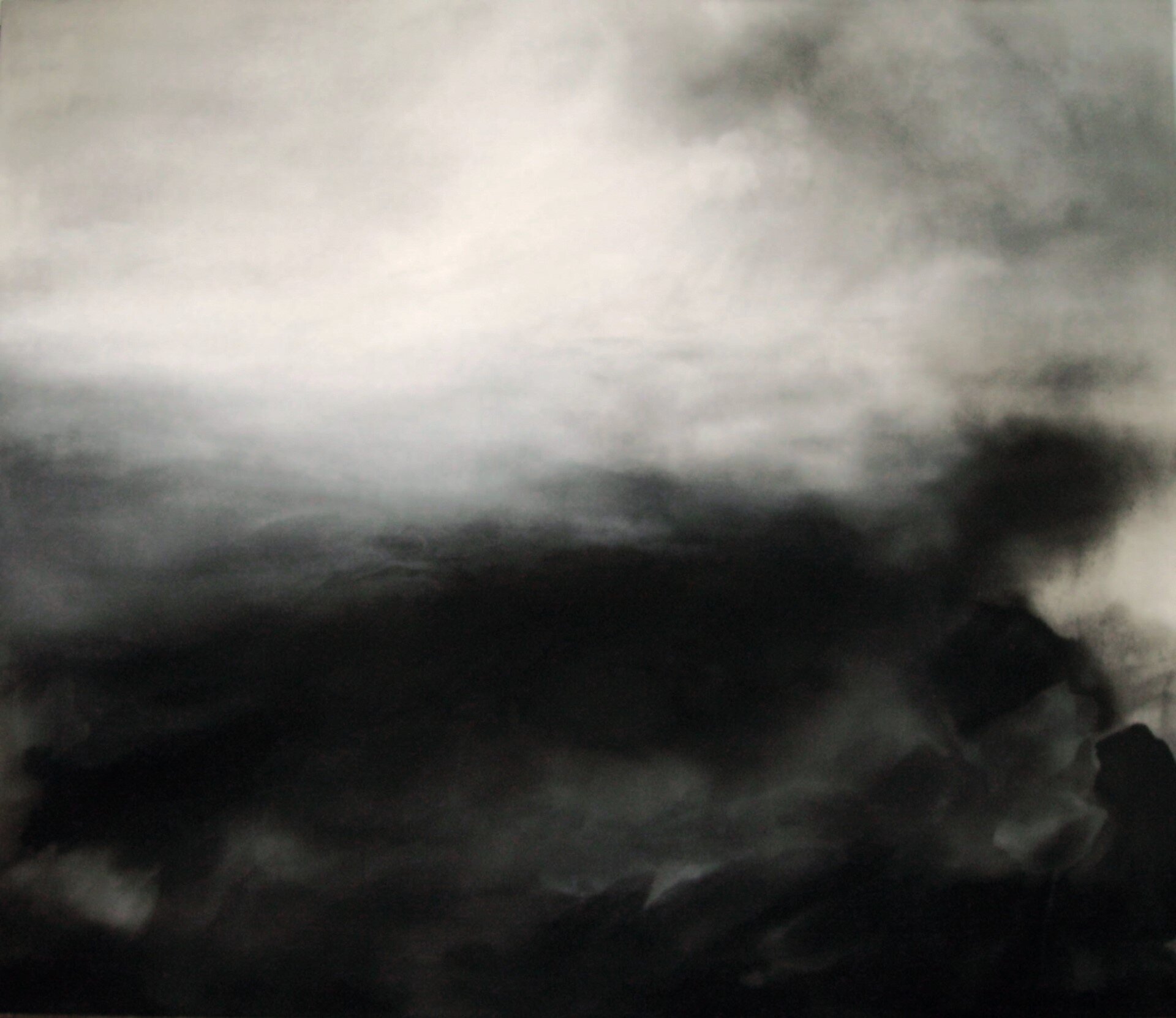
Atmosphere and Awe
by Hila Shachar
We live in an age of branding where words like ‘new’ and ‘post’ are applied to forms of art inspired by the past, as if to suggest that looking to the past must be mediated by a sense of consumption in the present. That is, things must be pre-packed. The underlying assumption behind this, in my opinion, is the idea that our attention span is relatively shorter now: we want the ‘new’, and we want it quickly, and we want it easily understood as a one-word concept, rather than as a philosophy. I question how true this is though, because as I look around me at contemporary art, I’m energised by the level of thoughtful engagement with art forms and philosophies from the past.
I’m putting on my theory hat today, so if you’re not into that kind of thing, you might not particularly like this post. It’s a bit more theoretical than my usual posts, and some may find this off-putting. But it’s the only way I know how to honestly express what I think about two artists’ works I’ve recently started to get excited about. And I want to share that excitement with you. But first, a few words on an artistic tradition of which I’m overly fond: Romanticism and the Sublime.
The scope of Romantic art is large, and it would be a great disservice to suggest that it is encapsulated by one theme alone. However, a representative work such as Caspar David Friedrich’s The Wanderer above the Mists (c. 1817-18) highlights a dominant theme in Romantic visual art: the Sublime in nature. Grand landscapes were often used by Romantic artists to articulate a transcendent identity through nature. The Sublime is evoked through natural scenes that inspire feelings of awe and fear, akin to standing at the edge of a large cliff or mountain, and encountering your own mortality while realising the transcendence of the spirit.
Postmodern art taught us a different way of seeing. It showed us the context of culture, society and ideology. It suggested we should be sceptical of things Romantic artists took for granted, such as internal subjectivity and transcendence. Instead, it highlighted how outside forces, rather than internal forces, govern our sense of self. So gender, class, nationality and sexuality came to the forefront and pushed aside the Romantic idealisation of an internal self that communes with a transcendent nature.
But something interesting is happening in contemporary art; something I have been silently watching from the sidelines. In Simon Gregg’s book, New Romantics, he has been not-so-silently documenting this contemporary trend:
We are witnessing the resurgence of ideas that took root centuries ago – a return to passion in art, and a return to atmosphere and awe. Historians called it Romanticism; a disposition for melancholic yearning, for communion with nature, for the sublime. Australian artists, in countless numbers, are engaging with these themes again today.
If Gregg sees this trend in Australian art, I also see it beyond my own Australian shores.
A few weeks ago, I received a book called Phasis from the artist, Philipp Haager. I dipped into the book and his artwork without reading anything first, and immediately my mind drifted to the Romantic landscape paintings of the past. Then, I began to read the introductory essay within the book, written by Helmut A. Müller, in which he describes Haager’s artistic process:
He works day after day, glaze after glaze, and layer after layer on the spatial depth and wide horizons, the lightness and heaviness exuded by his pictures. When, now and again, he succeeds at adding a new form, format or color scheme to the pictorial language he has developed to date, he knows he is on the right path. He assumes that something will then appear in his pictures that leads further and which transcends rationally describable relationships between cause and effect.
This description started turning ideas in my head. I felt as if I were encountering a modern form of Romantic philosophy and artistic practice. The literal depth which is applied to Haager’s paintings through a laborious process of spatial layering resembles the movement, tone and philosophy behind Romantic landscape painting in which spatial metaphors, grand depth and emotive colour are used to convey something which “transcends” all that is “rationally describable”. It is an artistic process that mirrors the philosophy of the Sublime. And just as importantly, it is a process that moves from the inside, like much Romantic art, relying on the artist’s imagination and subjectivity, rather than his/her outside world.
And yet, as I found myself staring at his paintings on my lap, I also realised: this is an entirely contemporary form of Romanticism. The eighteenth- and nineteenth-century Romantic paintings I am familiar with symbolise a different conceptual world where form is grand, but self-contained. Haager’s paintings, on the other hand, require the viewer’s participation alongside the artist’s vision. These are paintings that are so layered, they literally require you as the viewer to interpret them through your own vision – they move you back into the outside world, and into context. This movement back to the external world of the viewer is a postmodernist tendency that self-reflexively reminds us that all art is the product of a specific time and specific place, rather than something that emerges pristinely transcendent, rooted in an ahistoric Sublime. In a sense, Haager simultaneously calls upon a Romantic ethos while requiring a postmodernist response; and this is an exciting contradictory pull that seeks a ‘both-and’ relationship with art.
(excerpt from the article “Philipp Haager & Amy Sacksteder” via the Blog “Le Project d’amour“ by Hila Shachar, published in July 2012)
